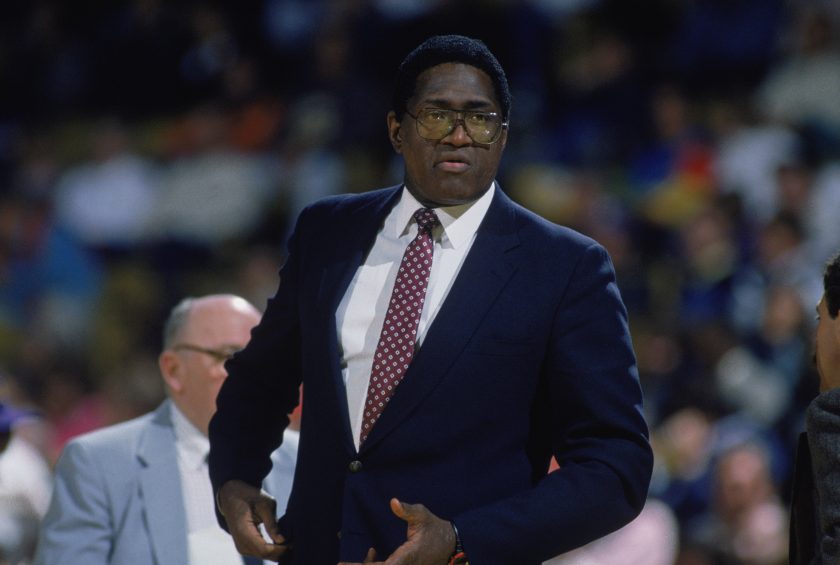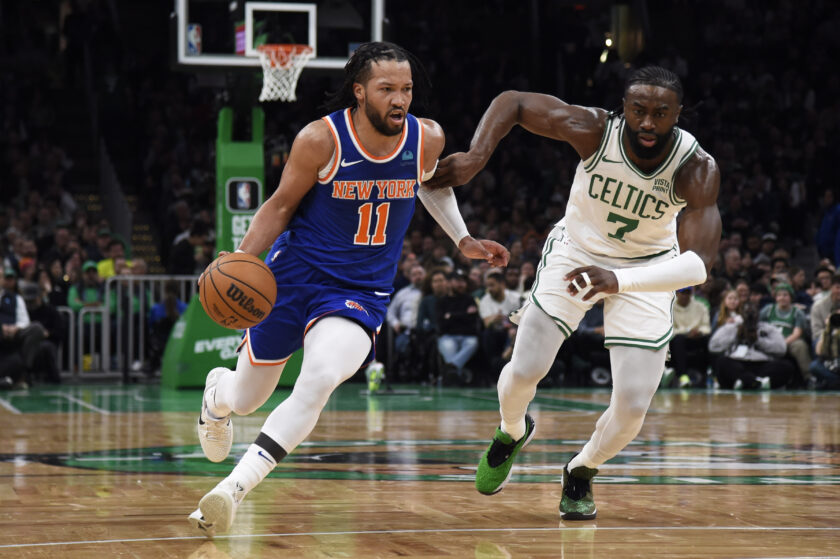New York Knicks: Drafting the All-1960s Team

The New York Knicks didn’t do much in the swinging ’60s, but some of their players still managed to succeed in spite of that.
[sc name=”josh-benjamin-banner” ]The 1960s were not kind to the New York Knicks.
Even though the 1969-70 season ended with the Knicks as NBA champions, the road to that point was rough. New York only averaged 34.7 wins a season for the entire decade, which was largely defined by the team rebuilding.
But even among some of the more forgettable rosters in team history, the Knicks still had some bright spots. The rebuild was long, but ultimately led to some of the most beloved names in team history.
Thus, let’s keep with the historical appreciation. Crank up the White Album, put on your love beads, and join the circle as we draft the New York Knicks’ all-1960s squad.
PG Howard Komives (Knicks Tenure: 1964-1968)
Known as “Butch,” Howard Komives falls under lots of Knicks’ fans collective radar. Fresh off a 22-win season, New York made him a second-round pick out of Bowling Green and immediately gave him significant minutes.
In doing so, Komives became the New York Knicks’ most notable point guard of the decade. Slowly but surely, the team turned into a contender. With Komives at the point, New York was back in the postseason in three years and gradually improved.
As for Komives’ performance, he did what he needed to do. He slashed to the rim, dished out passes, and wasn’t a terrible defender either. He averaged 11.9 points and 4.4 assists in a Knicks uniform and though he only shot 38.3% from the floor, his true shooting percentage (TS%) was just north of 44%.
Eventually, Komives was traded to the Detroit Pistons in 1968 and later spent time with the Buffalo Braves and Kansas City-Omaha Kings. The good news is thanks to trading him, Knicks fans got to enjoy a great successor in Walt “Clyde” Frazier.
SG Dick Barnett (Knicks tenure: 1965-1974)

The New York Knicks’ rebirth in the latter half of the ’60s wouldn’t have been possible without Dick Barnett. He was acquired from the Los Angeles Lakers for young forward “Bullet” Bob Boozer, and the rest is history.
Barnett averaged a career-best 23.1 points per game in his first year as a Knick and then became a reliable shooting guard for years to come. All in all, he posted 15.6 points per contest and shot 46.4% from the field in nine New York seasons. Barnett also held his own on defense, not once posting negative defensive win shares (DWS) in his career.
Eventually, the Knicks waived a 37-year-old Barnett after he had helped New York to two NBA championships. He then got a Ph.D in education at Fordham before remaining in the area to teach at St. John’s. Without him, the team absolutely would not have become a contender.
SF Willie Naulls (Knicks tenure: 1956-1962)

Small forward was a weird position in the 1960s, especially for the New York Knicks. New York’s offense was very guard and big-man heavy at the time, so finding a decade-defining wing indeed proved tough.
In this case, it’s impossible to not select Willie “The Whale” Nauls. The Knicks acquired him in a trade with the St. Louis Hawks and he took off from there. New York only made the playoffs once with Naulls on the team, but his play was just on a different level. He averaged a double-double in each of the five full seasons he played with the Knicks and averaged 19.3 points and 11.8 boards during his time with the team.
All in all, Naulls success with the New York Knicks is probably just a case of someone being the best player on a bad team. He only once posted win shares per 48 minutes (WS/48) north of .100 in a Knicks uniform. Sure enough, after the Knicks traded him to the San Francisco Warriors in 1962, he never once performed on the same level.
The good news is Naulls spent the last three years of his career with the Boston Celtics and won a championship each of those years. It’s just a shame he wasn’t around for when the Knicks finally climbed out of the cellar.
PF Willis Reed (Knicks tenure: 1964-1974)

Stay with me for a second. Was Willis Reed more a center than he was a power forward? He absolutely was, but the New York Knicks also had another dominant big man in the ’60s that we’ll soon discuss. Point being, Reed surely rotated back and forth between power forward and center several times in his career. For the sake of this list, he’s at the four.
And there are certainly worse people who could fill this spot than Reed. The Knicks drafted the future Hall of Famer in 1964 and he made an immediate impact, posting 19.5 points and 14.7 rebounds per game as a rookie. This kind of production became par for the course for the 6’9″ big man.
Reed would go on to average a double-double in all but three of his ten NBA seasons, all with the Knicks. He was an absolute force on both sides of the court, leading the league in win shares and WS/48 in 1969.
Reed also won two championships with the Knicks, though injuries started hampering him at this point. Just the same, his coming out and playing in the decisive Game 7 of the 1970 NBA Finals exemplified just how tough he was. He only had two baskets in the game, but still played with a torn thigh muscle.
Injuries forced Reed’s retirement at just 31 years old and on top of being the best Knicks’ power forward of the 1960s, he is one of the best big men in team history.
C: Walt Bellamy (Knicks tenure: 1965-1968)

If Willis Reed was shifted to power forward, it was because Walt Bellamy was too dominant at center. The Knicks made a blockbuster trade with the Baltimore Bullets to land Bellamy and thus set the tone for the team’s full resurgence.
Standing 6’11”, Bellamy and Reed provided the New York Knicks with a dominant frontcourt duo. The former No. 1 overall pick averaged 18.9 points and 13.3 rebounds in his brief New York Knicks career. Bellamy also shot 52.2% from the floor as a Knick, very impressive for the era.
But those who hoped to watch Reed and Bellamy work in tandem to win a championship were disappointed. Remember how we discussed Howard Komives being traded to the Detroit Pistons earlier? Well, he had company in Walt Bellamy heading to the Motor City with him. In the blink of an eye, a popular member of the team was gone.
The good news is the trade put Dave DeBusschere in a Knicks uniform, and he was instrumental in the Knicks’ future both on and off the court.
Still, after the trade, Bellamy averaged a double-double in a season three more times before retiring in 1975. Even if he wasn’t the best on-ball defender, it’s interesting what could have been if had he stuck around for the championship years.
Josh Benjamin has been a staff writer at ESNY since 2018. He has had opinions about everything, especially the Yankees and Knicks. He co-hosts the “Bleacher Creatures” podcast and is always looking for new pieces of sports history to uncover, usually with a Yankee Tavern chicken parm sub in hand.





